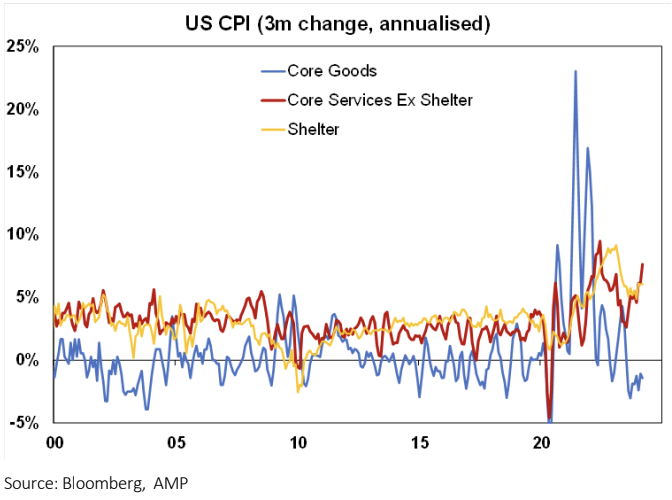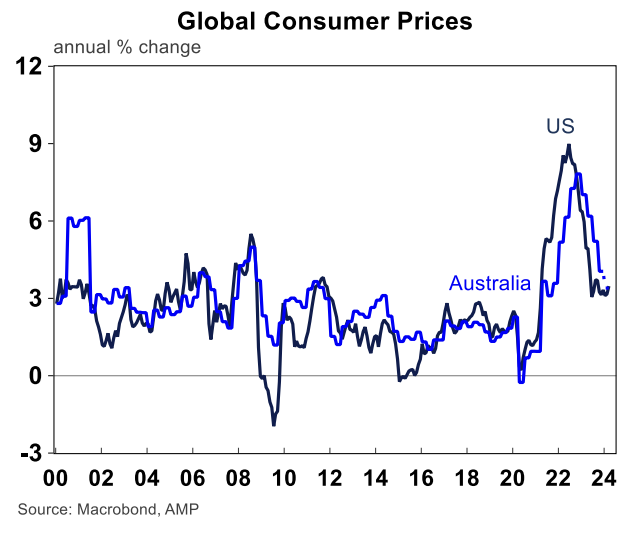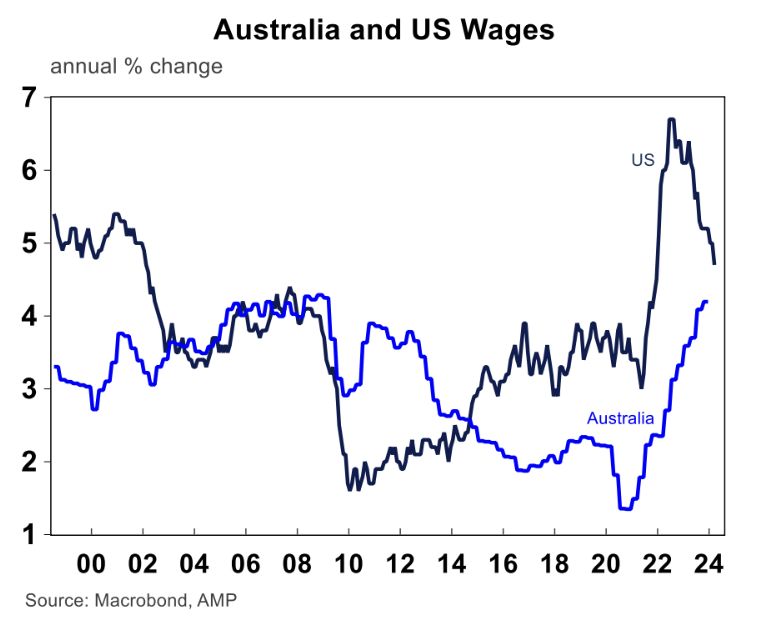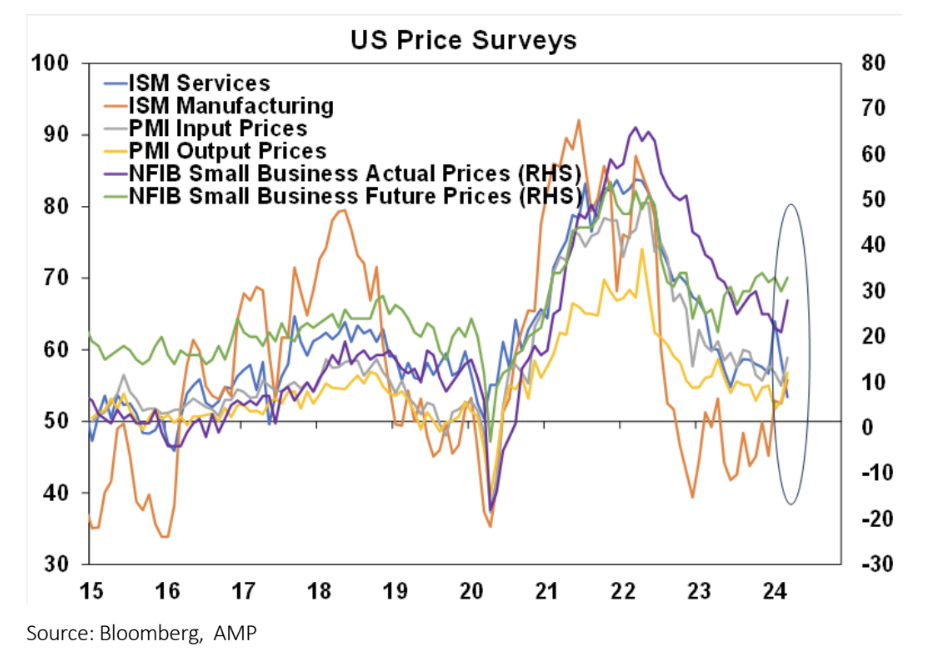5 reasons why Australian inflation will not follow the US
The headline US consumer price index (CPI) is running at 3.5% over the year to March and core inflation is at 3.8%. While this is much lower than the peak of 9% in mid-2022, inflation has moved sideways in the past few months, instead of trending down. Shelter and core services (ex-shelter) inflation is a problem in the US. Goods price inflation remains negative – see the chart below.

The US Federal Reserve targets a 2% inflation rate as measured by the personal consumption expenditure (or PCE) deflator. This is slightly different to the CPI because the weights used to calculate price growth change frequently based on current spending data. The PCE deflator is usually below the CPI and is currently at 2.8% over the year to February.
Differences in inflation in the US and Australia

Domestic conditions in the US and Australia have been impacted differently by monetary policy. The Australian consumer is highly sensitive to interest rate changes because mortgages are on short-term fixed or variable interest rates. US outstanding mortgage rates have risen by 0.5 percentage points, compared to 3.2 percentage points in Australia (see the chart below). This is despite Australia increasing interest rates by 1% less than the US.

Australian consumer confidence has been in recessionary-like levels for 26 months, while US consumer confidence readings have better. A softer consumer weighs on spending and inflation.
Wages growth never increased as much in Australia as it did in the US. High US wage growth is keeping US services inflation elevated. The Australian supply of labour (the participation rate) lifted to a record high after the pandemic, keeping a lid on wage growth. The US participation rate fell after the pandemic and has not recovered to its pre-COVID level as many left the workforce permanently, leading to a lift in wage growth.

In Australia, the same increase to minimum, award and enterprise agreements is unlikely to be awarded this year and the unemployment rate is expected to lift as labour demand has slowed. Softer wage growth in 2024 will see a softening in services inflation.
In Australia, only rents are included (with a weight of 5.8%), as payments for a mortgage are considered an asset and homeowner costs are measured as dwelling costs.

US price surveys have turned up (see the chart below) across business surveys and leading indicators like PMIs.

But in Australia, they have been trending down lately (see the chart below).



